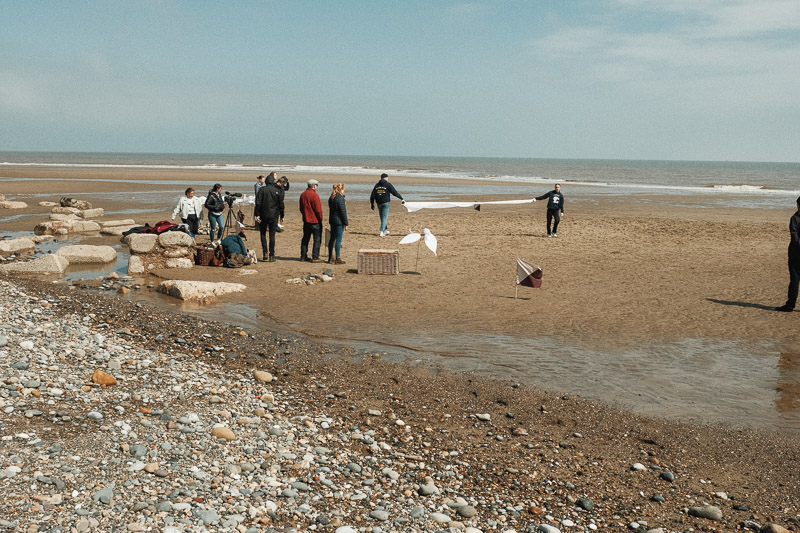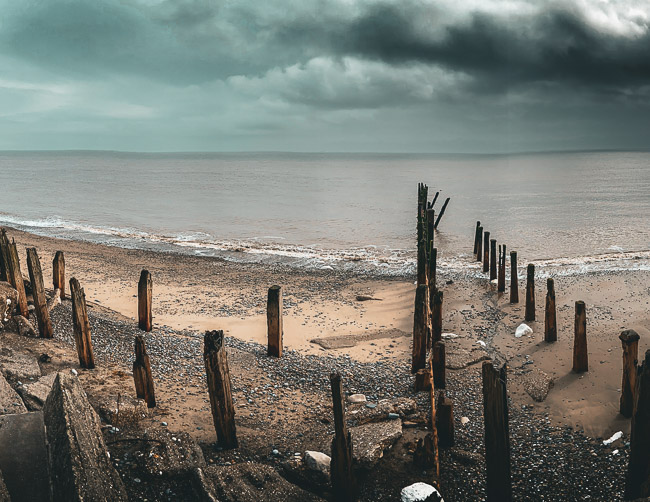Today, we concluded the first day of performances for Between Two Tides with members of the local community. These shared events have been designed as both a celebration of the South Holderness coastline and a reflection on its people’s deep connection to the landscape.
Site-specific, eco-arts performance, as we have learned throughout this project, uniquely embodies the fragility, transience, and interconnectedness between human and non-human actors. By directly engaging with this shifting, volatile landscape and the local community, our performance has become a medium for exploring the entangled and often contested relationship between human culture and the more-than-human world. As Claire Bishop has noted ‘site-specific work is able to invoke an intensified awareness of the surrounding environment’. We hope that Between Two Tides heightened this awareness of the South Holderness coastline’s constant transformation and our embeddedness within it.
Our performances have been deliberately timed to coincide with two very low, semi-diurnal tides, a phenomenon created by the gravitational interplay between the moon and the earth. The most recent lunar apogee was on May 5th, followed by the advent of a full moon yesterday, on May 8th. This is generating exceptionally low Spring Tides that are exposing for us a unique stage of sand (on ‘land’ that is typically submerged beneath the North Sea). This alignment of natural forces with human activity, even at the level of the pulling and pushing of an extra-planetary cosmos, emphasises the fluidity of this site, as well as the temporality of our presence. As Rebecca Schneider suggests, site-specific performance can ‘reenact’ a landscape’s own gestures; here, the encroaching tides and the brief emergence of the sand are creating a liminal space capable of blurring boundaries between land and sea. We selected this site, vulnerable to erosion and flooding, to draw attention to the intersecting rhythms of natural and human time and also the urgent need to appreciate, understand, and act about the changing climate before it is too late.
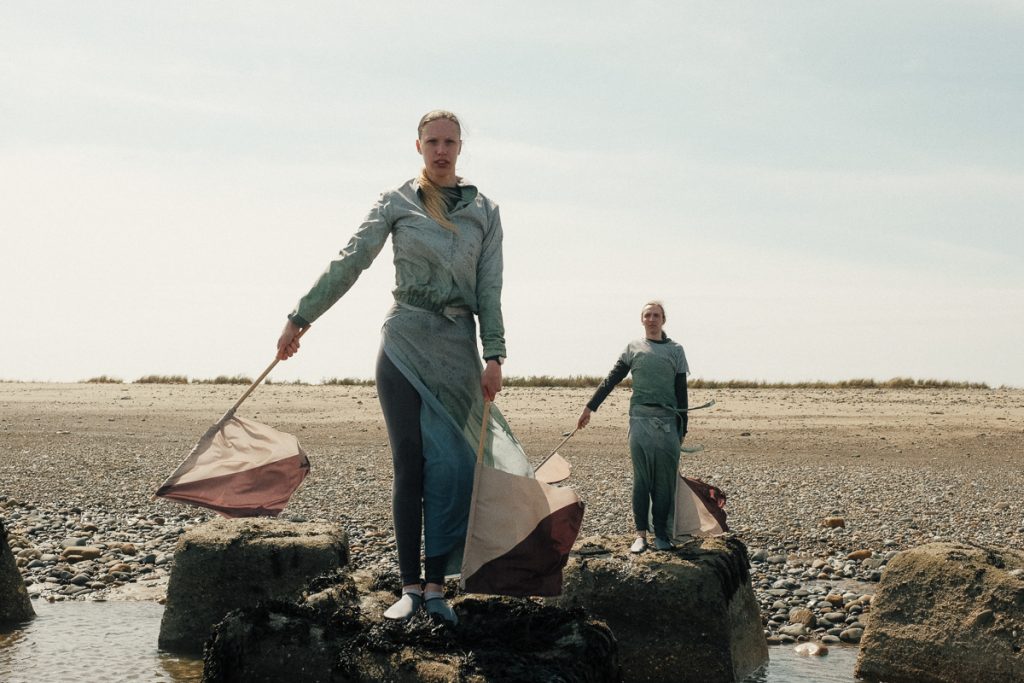
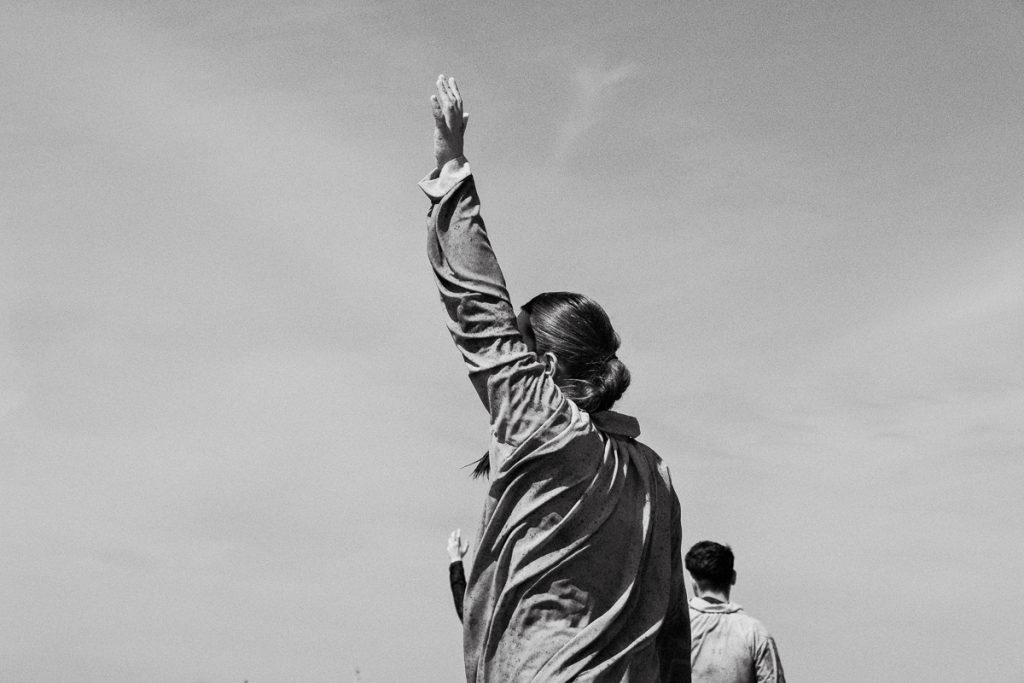

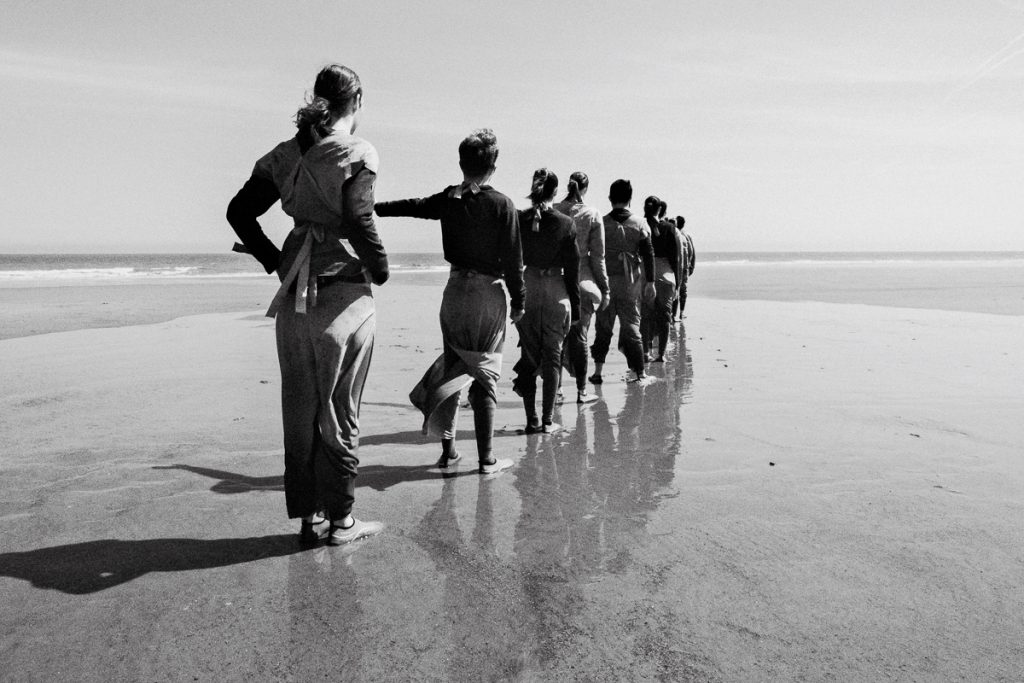
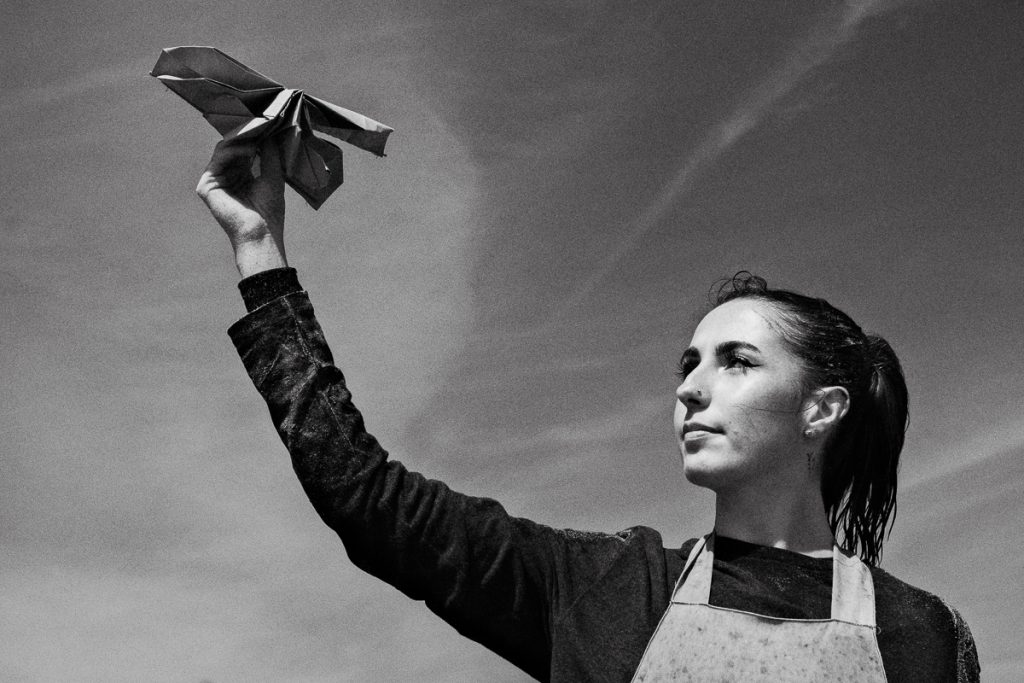
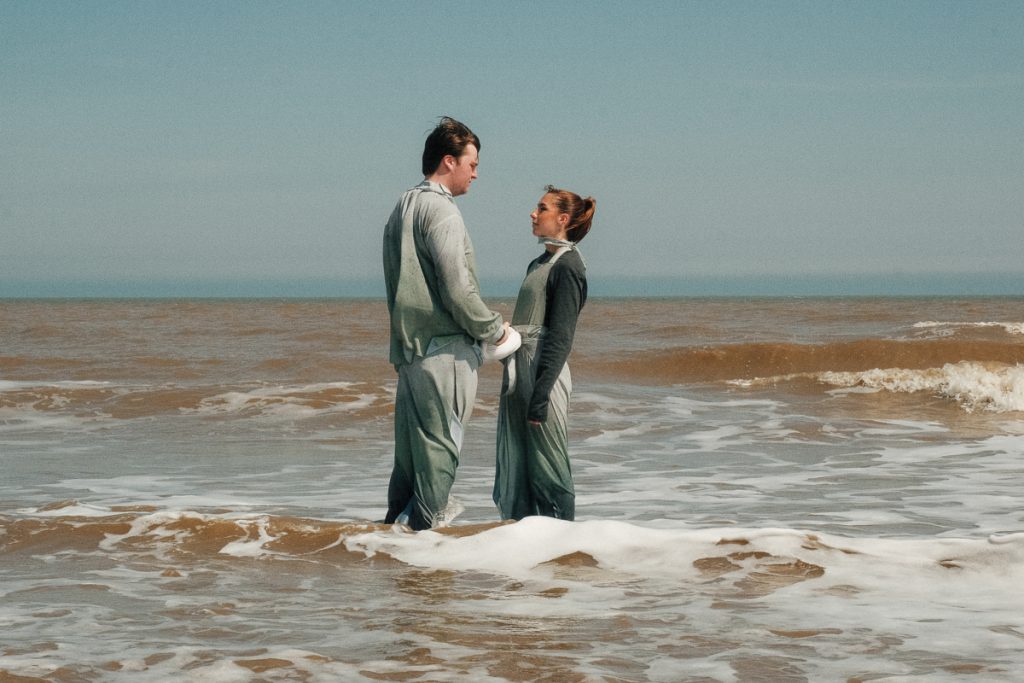
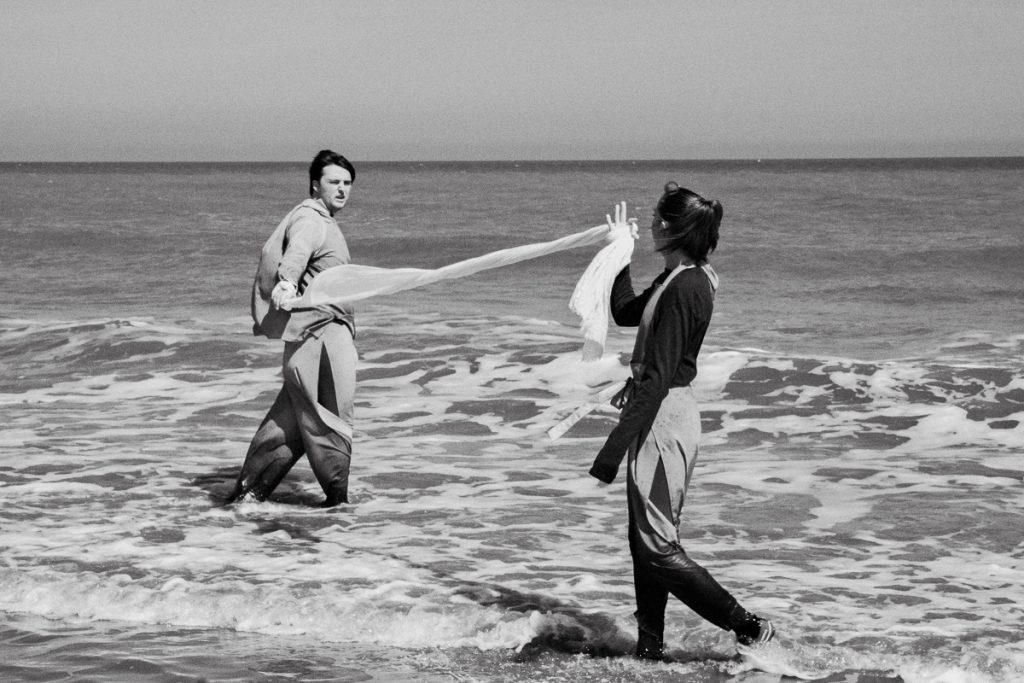

ecological thought is profoundly about coexistence. It is about how beings (including nonhumans) are connected
Recent scientific studies underscore the significance of this coastline. East Yorkshire’s coast is one of the most vulnerable in Europe to storms and surges from the North Sea. Additionally, rising sea levels, which have accelerated from 1.9mm per year (1800–2011) to 4mm per year (2012–2020), are increasing the risk of both flooding and erosion. The region’s unconsolidated clay and sand-rich glacial deposits contribute to Europe’s highest erosion rates, making this area a critical focal point for reflecting on broader environmental challenges. As Timothy Morton reminds us, ‘ecological thought is profoundly about coexistence. It is about how beings (including nonhumans) are connected’. Our performance aimed to stage that coexistence in real-time, in a space where landscape, weather, and sea continually reshape human life.
Drawing on Bruno Latour’s concept of a ‘Parliament of Things’, Between Two Tides has been an attempt to deconstruct the artificial divide between human and non-human actors. The Holderness coastal landscape has thus not merely been a backdrop but an active participant, shaping our performance as much as the performers. Latour’s assertion that ‘we have never been modern’ resonates here, pointing to the fallacy of separating nature from society. As Michel Serres argued (before Latour), ‘we so-called developed nations are no longer fighting among ourselves; together we are all turning against the world. We shall thus seek to conclude a peace treaty’. Through our performance, we aimed to embody these ideas, presenting the coastline as a living entity that, like the human communities nearby, is subject to forces of change, and like us is also seeking a path toward peaceful coexistence.
Our event today drew a diverse audience, including local residents in their 80s and Key Stage Two pupils from Easington Church of England Primary Academy. We were also joined by representatives from local groups such as SKEALS, Spurn Bird Observatory, and the Yorkshire Wildlife Trust, whose active contributions helped shape Between Two Tides. The presence of these groups reflected what Baz Kershaw has described as ‘the power of live performance to connect deeply with the environmental and social ecologies of its context’. The involvement of the local community has certainly highlighted for us the symbiotic relationship between performance and place.
So for us, this is not simply a dramatic representation – we were not ‘just dancing on the beach’ – we were trying to offer a vivid reminder of the dynamic processes reshaping a coastline; processes that reveal deep connections between people and the environment.
Coastal erosion and rising sea levels pose an ever-increasing threat, not only to the landscape but to the communities that depend on it. We are deeply grateful to the communities of Easington, Kilnsea and the former Spurn for their support and we are delighted to have shared this unique experience. As Bruno Latour said, ‘we must learn to listen to the Earth’s feedback loops and live within them’. Through this performance, we hope to have initiated exactly that process of listening, reflection, and action.


